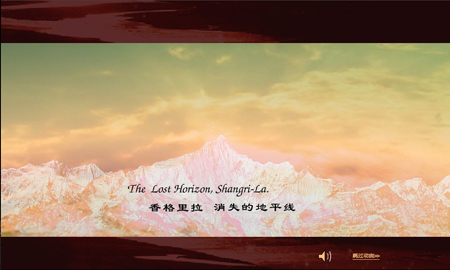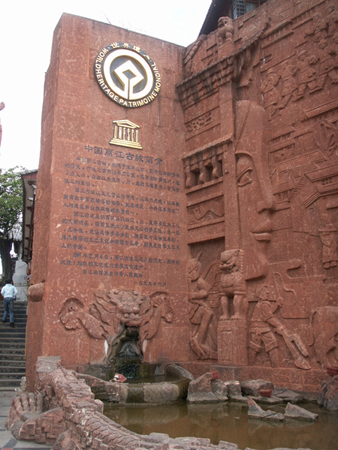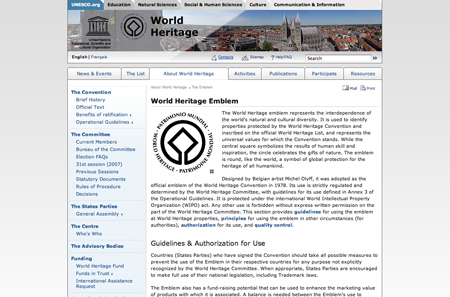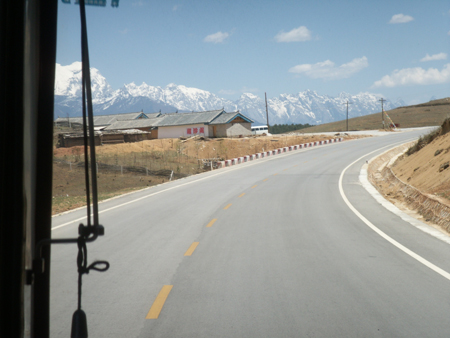Globalization and China’s rapid pace of development has brought many changes to the country, but the effects have gone much farther than Beijing and Shanghai.
Globalization and China’s rapid pace of development have brought increasing numbers of people to the northwestern Yunnan Province to visit, work or live. Adventure-seekers are no longer the only people taking advantage of the region. Because of its stunning landscapes and remarkable cultural diversity, Chinese and foreign tourists are coming in droves. Businesses and government agencies at various levels are now involved in promoting development and managing it. The dramatic expansion of economic activities has impacted the region and its peoples and many are concerned about threats to environment and indigenous cultures, the very things that attract so many to the region.
Northwest Yunnan in the Western Mind
Vienna-born Joseph F. Rock made a remote village north of Lijiang, Yunnan, his research base for 27 years from the 1920s to the 1940s. Rock, an explorer and academic, roamed southwest China and the inland Chinese provinces in large caravans, becoming an authority on the cultures and botany of China’s hinterland. A contributing writer for National Geographic in the 1920s and 1930s, Rock in 1947 published a two-volume Harvard University Press study of the landscape, history and culture of the Naxi minority people. He also created a more than one-thousand page Naxi-English dictionary. Rock’s National Geographic articles are dense with adventure tales of evading bandits, eating from golden bowls with Tibetan kings in their isolated mountain realms and explaining to tribesmen that an airplane is a machine, not a bird. Many articles feature pictures of Rock standing triumphantly atop a mountain or his campsite strewn amongst desolate landscape, with snowcapped peaks extending far into the distance. Rock often claimed to be the first Westerner to visit certain places or people (he once named a Sichuan mountain “Mount Grosvenor” in honor of the President of the National Geographic Society), peppering his text with boasts like “my friend the King of Muli.”

Screenshot of www.shangrilazone.gov.cn
English writer James Hilton coined the word “Shangri-La” in his 1933 novel Lost Horizon to describe the Himalayan lamasery that serves as the setting of his story. The idyllic surroundings Hilton describes share many characteristics with the Yunnan region featured in Rock’s travel writing. For example, a peak named Karakal dominates the landscape of Hilton’s Shangri-La much like the peaks Rock climbed and wrote about. Rock also writes of discovering fifty imported clocks in a lamasery in the Amnyi Machen mountain range between Tibet and modern-day Qinghai Province, while the monastery in Hilton’s Shangri-La possesses central heating and bathtubs imported from Akron, Ohio.
For an elaborate analysis of the author's works, please click here.
Peter Bishop, of University of South Australia, traces Western historical memory of the Tibetan region (which extends into Yunnan) in his book The Myth of Shangri-La. Utilizing travel writing from Europeans, Russians and Americans that came before Rock, Professor Bishop writes that Tibetan religion, culture and geography were central to Western perception of the area until the middle of the twentieth century. “Then,” he continues, “under the increasing sense of threat to the perceived isolation and purity of Tibet, there was a separation between fantasy and geographical place. ‘Shangri-La’ marks the final movement of Tibet from a geographically grounded sacred place to a placeless utopia.”
The Branding

The UNESCO World Heritage Emblem at the entrance of the Old Town. Photo by C. Alesevich.
Established in 1972, the World Heritage Commission for the United Nations Educational, Scientific, and Cultural Organization (UNESCO) seeks to preserve global sites of “outstanding universal value,” either cultural, natural or both in nature. Today, the UNESCO World Heritage List features an astounding 851 properties on six continents. The World Heritage Emblem is prominently displayed at each location on “The List.” In Lijiang, the emblem sits proudly at the entrance of the Old Town, emblazoned on a large wall alongside the main pedestrian thoroughfare, opposite a wall with the words of former Chinese President Jiang Zemin. Lijiang’s Old Town was named a World Heritage Site in 2003. .
The World Heritage Emblem is a critical part of building a Lijiang brand. As with corporate logos created by graphic identity specialists, the World Heritage Emblem is to be displayed in particular ways. And as a result, certain royalties are expected, though they are not described as such. As he World Heritage website puts it, “When commercial benefits are anticipated, the [World Heritage] Centre should ensure that the World Heritage Fund receives a faire share of the revenues…”

Screenshot of the World Heritage website.
Andrew Meinke, president of the World Heritage Foundation, understands the importance of the UNESCO World Heritage brand. While his organization is independent of UNESCO, Meinke has been working to film documentaries of UNESCO World Heritage Sites, of which Lijiang is one.
“I believe that the UNESCO World Heritage brand is universally recognized and highly valued,” he wrote in an e-mail, “and that the selection process is a very good one. That a Site has been selected speaks volumes about its value and uniqueness. And Lijiang offers so much beauty, history and culture to the visitor that it certainly adds meaningfully to the credibility of the UNESCO brand.”
“Our focus is on caretakers of culture, individuals who are dedicating themselves to protecting their natural and cultural environments” Meinke said. Their mission is to “enhance cross-cultural understanding and promote appreciation for unique people and places around the world,” preserving the natural beauty of such places. Their exciting work, which is previewed on their website, uses film to capture what Rock and Hilton described in words.
A Place Where Everyone Goes

The road from Lijiang to Xianggelila is marked by snow-capped peaks. Photo by C. Alesevich.
Lijiang began attracting the attention of tourists, tourism promoters, and cultural preservationists in the 1990s. China’s government nominated it for World Heritage designation in 1996. Lijiang’s neighbors took note.
Zhongdian is four hours by car to the northwest of Lijiang. In 2001, the municipality officially changed its name to Xianggelila, a transliteration of “Shangri-La” into Chinese. Xianggelila, according to the Christian Science Monitor, attracts over two million tourists a year and is poised for close to five million annual tourists in the coming years. While many of the area’s Tibetan majority benefit, CSM quotes a Tibetan hotel owner saying that newly arrived Han Chinese businessmen receive sixty-five percent of tourist-generated profit, the government ten percent, local Tibetan and Han businessmen twenty percent and local villagers less than ten percent. An online search of tours in the region reveals a plethora of tour operators. One offers a night’s stay in Joseph Rock’s village outside of Lijiang, another offers a “taste of Tibetan frontier culture in Gyalthang [Xianggelila’s Tibetan name],” and a Lhasa-based firm calls itself “Shangrila Tours.”
The government-bestowed Shangri-La brand has been thoroughly embraced by the local authorities. A website run by the municipality of Xianggelila to disseminate laws regarding business and development is called “Shangri-La Zone” (www.shangrilazone.gov.cn). The page’s flash introduction features an image of a snowcapped mountain and includes, in English, “Shangri-La, the Lost Horizon” and, in Chinese, “Here is the paradise of the human realm.” Soothing music plays in the background. Elsewhere at the site, one finds information regarding taxes, the area’s special economic zone, and the procedure to opening a business. The contact page features a photo of woman in Tibetan costume on a cell phone, smiling.
Reached by email, Professor Bishop offers his impressions of this activity. “I must say,” he comments, “I’ve been fascinated by the wholesale adoption and commodification of the Shangri-La notion by China…It seems to be more akin to the nineteenth century American West—a place of financial opportunity, excitement, risk and danger, visually exotic minority cultures and spiritual wisdom and magic powers.”
The young Naxi woman in charge of Joseph Rock’s village home outside of Lijiang, also reached by email, is more vague about what Shangri-La means. Hejing writes in Chinese, “Shangri-La represents an unearthly paradise, a place where everyone goes, a place that is not in conflict with the world. The mountains and water are clear, and everybody there lives a peaceful and leisurely life. Because of this, everyone goes there to eliminate the noise and troubles of the city.”
What It Means
Andy Meinke has examined “the World Heritage Challenge” at length. The challenge, he’s said, is that designation as a World Heritage Site, “highlights and energizes two potentially conflicting interests: the interest of the world community in preserving and protecting the site for the enjoyment of present and future generations; and the interest of the adjacent communities in profiting from the increased prestige and tourism that will inevitably result.”
According to Meinke, Peking University scholars Xie Ninggao and Wu Bihu confirm that neighboring profiteers seek to maximize short-term gain. Combined with a lack of well-trained local officials, this leads to quick overdevelopment including the erection of an unsustainable infrastructure. Furthermore, tourists overwhelm the designated site and the expansion of neighboring communities produces pollution and other threats. All of these results are contrary to the preservation motivation underlying the World Heritage effort.
It is possible to keep these forces in check, Meinke believes. His prescription involves five phases. First is documentation of the land’s condition, which, he wrote, “will include interviews with key stakeholders, and will capture the wisdom of the local representatives of the local culture and local artists and craftspeople”; second is education, in which “modules on ecological integrity and biodiversity will be developed and provided, as will training about Site management and sustainable economic development”; third is evaluation, which “will be considered within the framework of sustainable development and eco-cultural integrity”; fourth is planning, which “will tap into the results and recommendations of other GEF [Global Environment Facility]-funded and co-funded projects”; and fifth is monitoring, which will “generate comparisons” with the initial documentation.
Meinke argues, “the key to having tourism develop as a ‘friend’ instead of as an ‘enemy,’ is to help those who live near World Heritage Sites understand, accept and take pride in their roles as ‘Caretakers of Culture.’”
Timothy Hildebrant is doctoral student at the University of Wisconsin and received funding from the National Science Foundation to conduct research in Xianggelila as part of a University of Wisconsin biodiversity and sustainable development project. The researchers are focused on a) the livelihood strategies and demographic pressures driving regional resource exploitation, b) ecological factors governing patterns of biodiversity, and c) governance structures and policies affecting biodiversity and economic development.
In a US-China Today interview, Hildebrant said, “Many NGO groups with names out there [in Xianggelila] don’t exist anymore,” because leaders with “skeletal staffs” succumb to fatigue and exhausted budgets. Local authorities and NGOs are now focused on HIV-AIDS rather than environmental work.
“I don’t see this changing…[It is a] mere suggestion by the central government that local provincial leaders keep the environment in mind,” Hildebrant said, regarding the Xianggelilia municipal government’s descision to favor economic growth over environmental issues.
Tourism, the region’s primary economic engine, produces so many changes that simple policy efforts at control are often ineffectual. Hildebrant notes, “So many things surround tourism, it’s important when you talk about tourism you talk about all the things necessary to build it up.”
“Tourism is a short-term fix,” Hildebrant argues. “[T]ourism building up in micro-towns is not sustainable; there’s a lack of sustainability because entrepreneurial people from outside come in and promise them the world…those not skeptical become so reliant on tourism that it’s not going to hold. [People are] leaving self-sustainable agriculture to cater to tourists—and tourists are fickle—as soon as the tourists leave they have difficulty going back to old jobs.”
Hildebrant says that most of Xianggelila’s businesspeople may at most have working experience in Kunming, the provincial capital. Despite this, Hildebrant says, “It’s not a hard sell to make. They say, “You can trust me, I’m a businessman,’” adding that the outsiders typically have a connection to the local area and the locals “trust a relatively successful family member.”
Commenting on the government’s official line that it seeks to simultaneously preserve ecology and improve local lives, Hildebrant is unequivocal. “This is the fallacy of eco-tourism,” he said. “I don’t believe in it—some researchers do. To add ‘eco’ is greenwashing something that causes degradation. It’s important to be realistic about what this thing [eco-tourism] is and understand it will have a cognitive impact and then understand how to improve ecology; you can’t say eco-tourism will save the environment and makes lots of money.”
“The branding of eco-tourism is not too different from the branding of Shangri-La,” Hildebrant said, “a positive image and they don’t have to do anything for it—a very low cost marketing scheme.”
When asked about the significance of Xianggelila’s new name, Hildebrant was dismissive. “The ‘Xianggelila’ name has not been around for a long time. People will still call it Zhongdian, so not a lot of people buy into it,” he said. “I don’t really buy that it’s been altogether successful and that it’ll be successful in the end.” He notes that the airport, with it’s Shangri-la sign, is still officially Diqing Airport.
When I admitted to visiting Xianggelila because its name intrigued me, Mr. Hildebrant responded bluntly, perhaps with implicit criticism. “Well,” he concludes, “you did exactly like they wanted you to.”
Christopher Alesevich is a senior majoring in International Relations at the University of Southern California